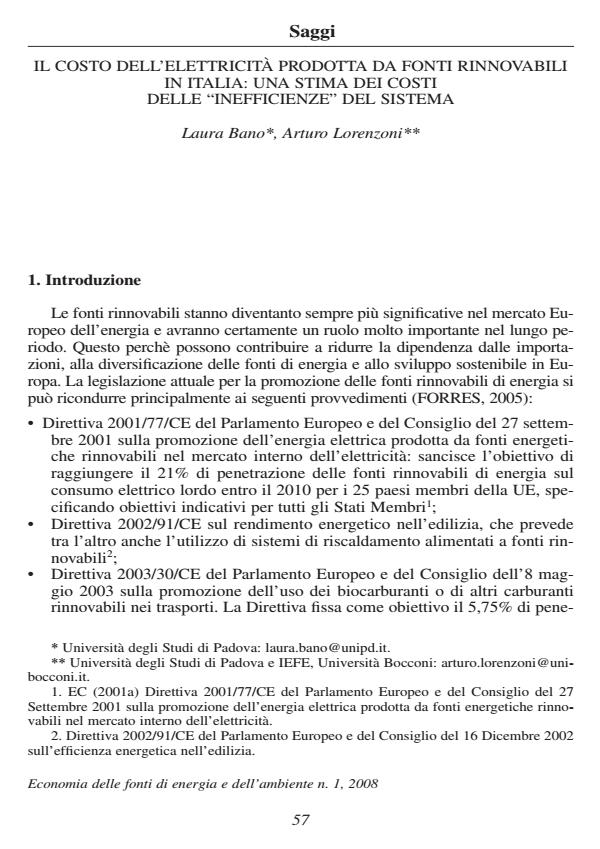Il costo dell'elettricità prodotta da fonti rinnovabili in Italia: una stima dei costi delle "inefficenze" del sistema
Journal title ECONOMIA DELLE FONTI DI ENERGIA E DELL’AMBIENTE
Author/s Arturo Lorenzoni, Laura Bano
Publishing Year 2009 Issue 2008/1
Language Italian Pages 21 P. 57-77 File size 772 KB
DOI 10.3280/EFE2008-001004
DOI is like a bar code for intellectual property: to have more infomation
click here
Below, you can see the article first page
If you want to buy this article in PDF format, you can do it, following the instructions to buy download credits

FrancoAngeli is member of Publishers International Linking Association, Inc (PILA), a not-for-profit association which run the CrossRef service enabling links to and from online scholarly content.
Electricity generation from renewable energy sources in Italy: The costs of the "System" Inefficiences - The promotion of electricity from renewable energy sources (RES) is a high European Union (EU) priority for several reasons, including the security and diversification of energy supply, environmental protection and social and economic cohesion. The EU Council’s decision of 9 March 2007 points towards increasing renewable penetration to 20% of total primary energy supply by 2020 (binding target). There are both costs and benefits associated with the achievement of such an ambitious target. For renewable technologies, the industrial cost is often higher compared to other energy sources. however, due to learning curve effects and market diffusion, technology related costs are coming down considerably. In some cases, when the external costs are taken into account by the price system, renewables can now be close to competitive with fossil fuels. With particular reference to renewable electricity in Italy, its development is often hampered by burdensome and time consuming authorisation procedures with the consequence of a high "mortality" rate for the investments in the sector, leading to increased costs for the project management. Therefore, in these projects an important cost factor is the high cost of capital due to risk. The analysis of the various renewables’ support mechanisms currently in place in the EU shows that some types of incentive have proven to be more efficient than others in reducing the risk perception of investors and financing institutions, therefore making projects less expensive by reducing the cost of capital (both debt and equity). Therefore the focus here is on the electricity generation costs of some renewable technologies and on the costs related to the "additional" risk perceived by investors/lenders in the sector. The authors estimate the additional cost of capital which investors pay when operating in a risky environment. Some policy indications are finally given to reduce the non-technology related costs for a faster and more efficient growth of the sector. JEL Class. L98, Q28, Q48 Key words: renewable energy, electricity cost, administrative procedures, system inefficiency
Arturo Lorenzoni, Laura Bano, Il costo dell'elettricità prodotta da fonti rinnovabili in Italia: una stima dei costi delle "inefficenze" del sistema in "ECONOMIA DELLE FONTI DI ENERGIA E DELL’AMBIENTE" 1/2008, pp 57-77, DOI: 10.3280/EFE2008-001004